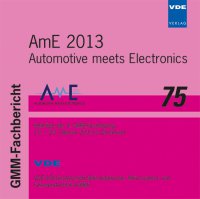The Hata Model in Comparison with Theoretical Results for a Dipole Radiating over Inhomogeneous Plane Earth
Konferenz: AmE 2013 - 4. GMM-Fachtagung
19.02.2013 - 20.02.2013 in Dortmund, Deutschland
Tagungsband: AmE 2013
Seiten: 8Sprache: EnglischTyp: PDF
Persönliche VDE-Mitglieder erhalten auf diesen Artikel 10% Rabatt
Autoren:
Kuhlmann, Peter (Continental Automotive GmbH, Philipsstraße 1, Wetzlar, Germany)
Inhalt:
Theoretical results for a dipole radiating over inhomogeneous plane earth are compared with the Hata model. It is investigated whether the difference in the dependency of the path loss on frequency can be resolved between the theoretical model and the Hata model. Modeling the propagation of radio waves originating from a short dipole over flat and open terrain is a basic task in radio network planning. In the frequency range between 150 MHz and 1500 MHz, the Hata model, based on the former work by Okumura et al., is usually applied. From the point-of-view of classical electrodynamics, empirical models, such as the Hata model, appear as surprising approaches to this task. The reason is that the work by Sommerfeld on a short dipole radiating over flat earth has already given a solution to the according idealized problem. If a closer look is taken on how these theoretical results compare to the measurements, similar results are observed for the dependency of the path loss on distance to the short dipole. But a significant difference is found between the theoretical results and the measurements in the dependency of the path loss on frequency. In the paper, it is investigated whether this difference can be resolved by modeling the ground as a two-layered medium.


